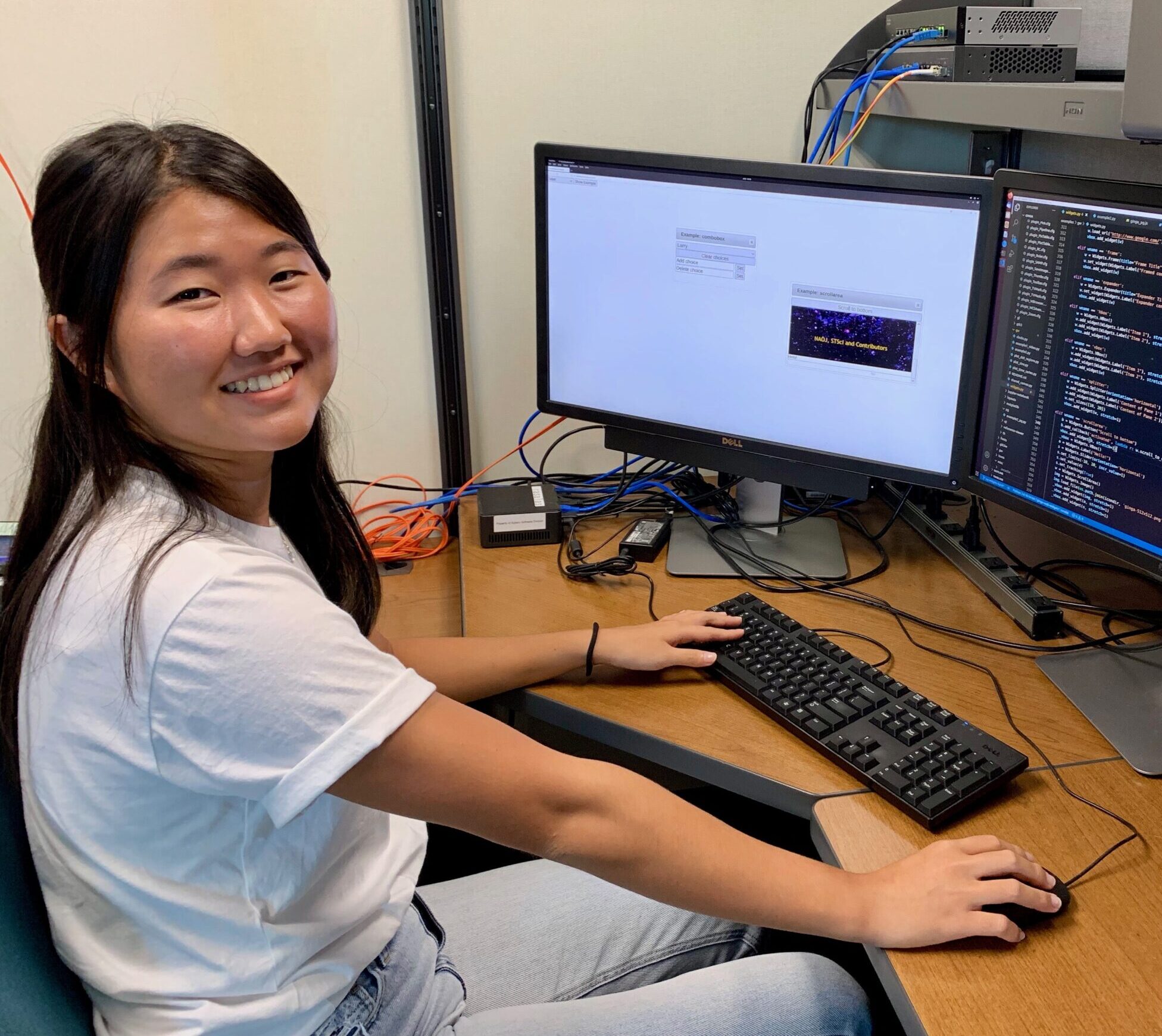
Kyra Ikeda grew up on Oahu and graduated from Pearl City High School in 2017 as a valedictorian. She is currently pursuing a Bachelor of Science in Computer Science at the University of Hawaii at Manoa. Kyra is a member of her university’s Supporting Women in Information and Technology & Computing in Hawaii (SWITCH) club and had the opportunity to serve as vice president. After graduation, she hopes to apply her knowledge of computer science to oceanographic research and be able to benefit the community. Outside of work and school, Kyra enjoys surfing, drawing, and painting.
Home Island: O’ahu
High School: Pearl City High School
Institution when accepted: University of Hawaii at Manoa
Akamai Project: Enhancing the Ginga Toolkit for Astronomical Image Viewers to Operate on the Web
Project Site: Subaru Telescope – Hilo, Hawai‘i Island HI
Mentors: Russell Kackley, Eric Jeschke
See Kyra’s internship experience featured on Subaru Telescope’s Website:
https://subarutelescope.org/
https://subarutelescope.org/
Project Abstract:
The Subaru Telescope Software Division developed Ginga, a Python-based toolkit of GUI (Graphical User Interface) widgets, used to build image viewers for scientific data files taken by the telescope instruments. Currently, Ginga exists solely as a desktop application based on the Qt and Gtk toolkits; however, it would be convenient to allow the Ginga widgets to run on the web as well. This enhancement would provide ease of access for users worldwide and be beneficial for other applications that are based on the Ginga toolkit. The goal of this work is to have the Ginga web widgets closely imitate the functionality and appearance of the desktop version. To build Ginga on the web, encapsulation and abstraction will be employed by creating a wrapper class where the web widgets will be coded. Ginga will use the jQWidgets JavaScript library, JQuery UI, and basic HTML to form the GUI widgets when run on the web. Additionally, a client/server model will be employed including a web socket that provides two-way communication between the client and server. The server side is written in Python, and the client side is written in JavaScript, HTML, and CSS. A spreadsheet listing various Python methods that the widget wrappers have was created to methodically track which ones required implementation or improvements. The progress made during the course of this project will advance Ginga and applications based on it towards the ultimate goal of being fully operable in a web browser.